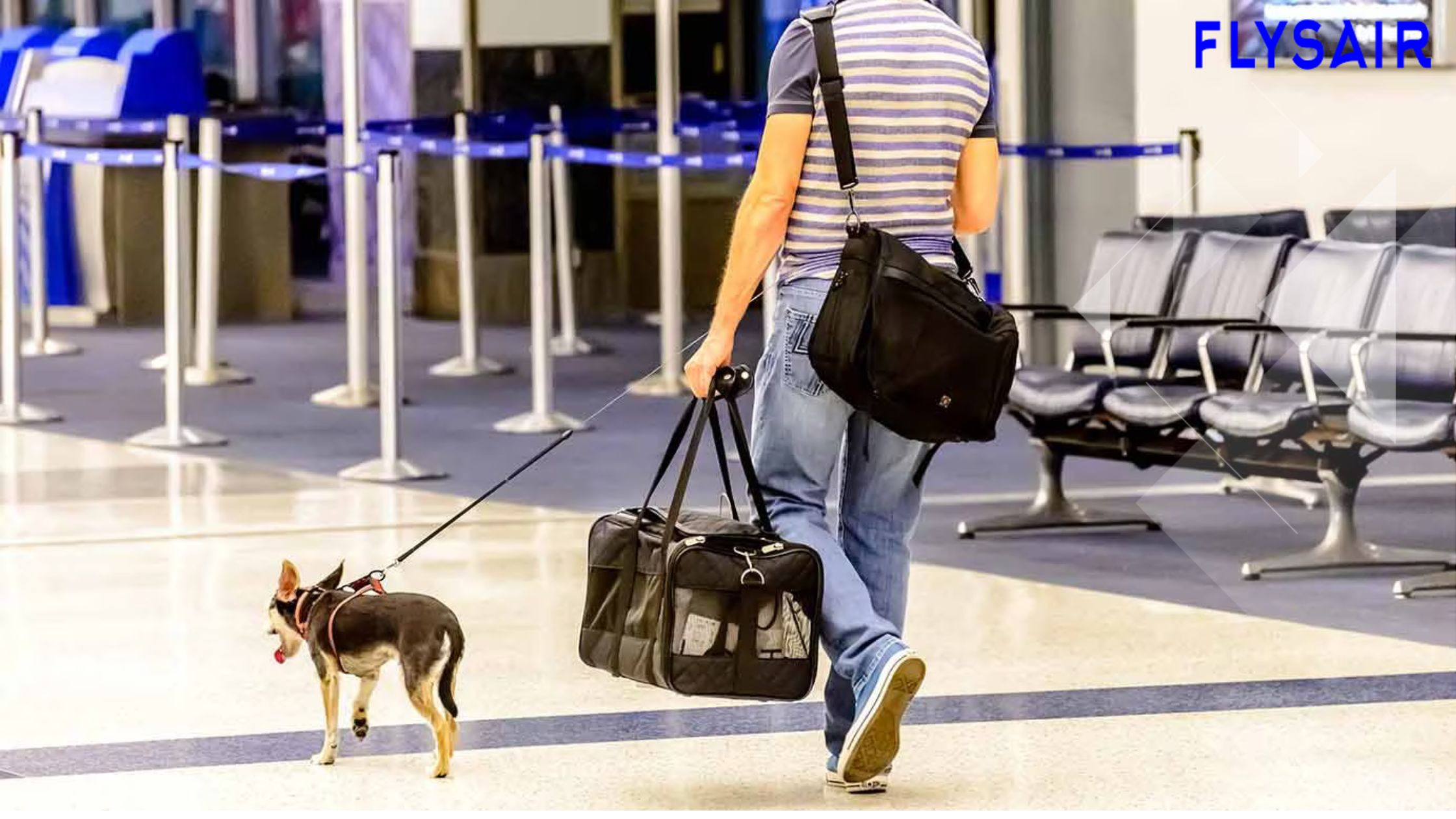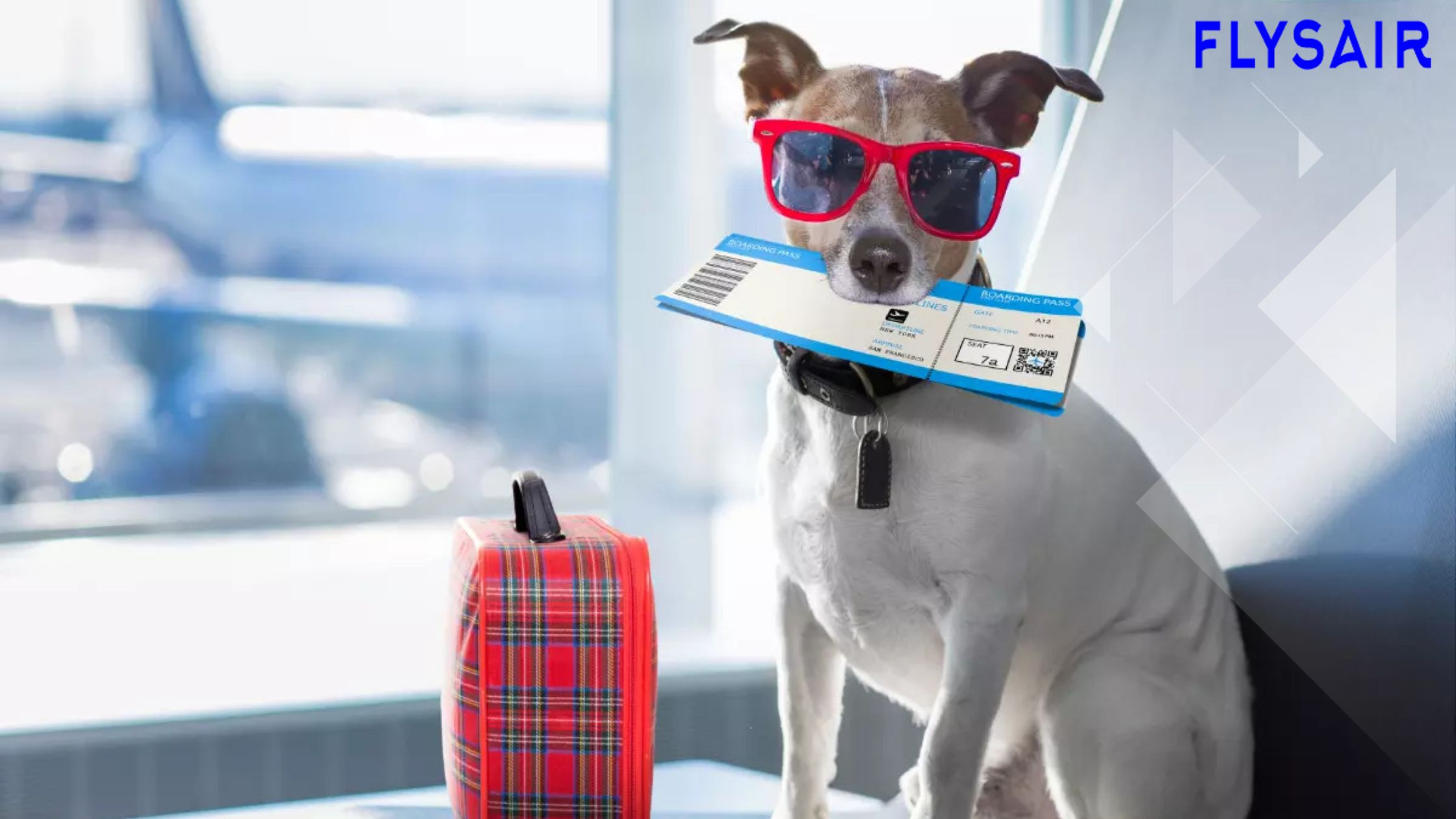Airline Pet Policies: What You Need to Know
Posted on June 19, 2024 by Admin

Airline Pet Policies: What You Need to Know
Traveling with pets can add a layer of complexity to your journey, especially when it comes to understanding and navigating airline pet policies. Each airline has its own set of rules and regulations regarding pet travel, designed to ensure the safety and comfort of both pets and passengers. Whether you're planning to bring your pet into the cabin or have them travel in the cargo hold, it's crucial to familiarize yourself with these policies to make informed decisions and prepare accordingly. In this comprehensive guide, we will explore everything you need to know about airline pet policies, along with answers to frequently asked questions to help you plan a smooth and stress-free trip for you and your furry friend.

Understanding Airline Pet Policies
Airline pet policies outline the specific guidelines and requirements for traveling with pets, including the types of pets allowed, carrier specifications, health documentation, fees, and more. Here are key aspects to consider:
Types of Pets Allowed
Most airlines primarily accommodate dogs and cats for both domestic and international travel. Some airlines may also permit smaller pets like rabbits, birds, or small rodents, but policies vary, so it's essential to check with the airline well in advance.
In-Cabin vs. Cargo Hold Travel
In-Cabin:
- Small pets that meet size and weight restrictions can travel in the cabin with their owners.
- Pets must remain in an airline-approved carrier that fits under the seat in front of you.
- Airlines typically limit the number of pets per cabin and may have specific requirements for carrier dimensions.
Cargo Hold:
- Larger pets or those not permitted in the cabin may travel in the cargo hold.
- Requires a sturdy, well-ventilated pet crate that meets airline and IATA (International Air Transport Association) regulations.
- Advance booking is required for cargo hold travel, and additional fees apply.
Health Documentation
All pets traveling by air must have up-to-date vaccinations and a health certificate issued by a licensed veterinarian. The health certificate confirms that the pet is in good health and fit to travel within a specified timeframe before departure.
Fees and Charges
Traveling with pets typically incurs additional fees, which vary by airline, destination, and the pet's travel accommodations (in-cabin vs. cargo hold). These fees cover administrative costs, handling, and sometimes include taxes or surcharges.
Must Read : Exploring Delta's SkyMiles Program: Tips and Tricks

Tips for Pet Travel Preparation
1. Research Airline Policies
Review the specific pet policies of your chosen airline, including restrictions, required documentation, and fees. Policies can vary widely, so ensure you comply with all requirements to avoid issues during check-in.
2. Choose the Right Carrier
Select an airline-approved pet carrier that provides adequate ventilation, security, and comfort for your pet. Introduce your pet to the carrier gradually before the trip to help them feel more at ease during travel.
3. Veterinary Check-Up
Schedule a veterinary visit shortly before your trip to obtain the necessary health certificate and ensure your pet is healthy and fit for travel. Some destinations may have additional health requirements, such as specific vaccinations or treatments.
4. Pack Essentials
Bring essential items for your pet, including food, water, dishes, medications, a leash, waste bags, and any comfort items like blankets or toys. Familiar scents and items can help reduce stress during travel.
5. Arrive Early and Prepare for Security
Arrive at the airport well in advance to complete check-in procedures for your pet. Be prepared to present all required documentation and allow time for security screenings or inspections of your pet's carrier.
Benefits of Understanding Airline Pet Policies
1. Peace of Mind
Knowing and complying with airline pet policies ensures a smoother travel experience and reduces stress for both pet owners and their animals.
2. Safety and Comfort
Adhering to carrier and health requirements helps ensure your pet's safety and comfort throughout the journey, whether in the cabin or cargo hold.
3. Avoiding Issues and Delays
Familiarity with pet policies helps prevent last-minute issues at check-in or boarding, such as incomplete documentation or incorrect carrier sizes.
Challenges of Traveling with Pets
1. Limited Availability
In-cabin space for pets is often limited and subject to availability. Cargo hold options may also have restrictions based on factors like weather conditions or aircraft type.
2. Health Considerations
Long flights and unfamiliar environments can stress pets and potentially exacerbate health issues. Adequate preparation and veterinary care are essential to minimize risks.
3. Cost
Additional fees associated with pet travel can add to the overall cost of your trip, so budgeting accordingly is important.
Must Read : Maximizing Your Miles: A Guide to the American Airlines AAdvantage Program
Faqs
-
1. What are the typical requirements for pets traveling in the cabin?
Pets traveling in the cabin must usually fit comfortably in an airline-approved carrier that fits under the seat in front of you. Weight limits for both the pet and carrier apply, typically around 15-20 pounds combined.
-
2. Can I travel with multiple pets on the same flight?
Most airlines restrict the number of pets per passenger and per cabin. Cargo hold options may accommodate more pets, subject to availability and airline policies.
-
3. How can I ensure my pet stays comfortable during travel?
Choose a carrier that allows your pet to stand, turn around, and lie down comfortably. Line the carrier with absorbent bedding and include familiar items like toys or blankets.
-
4. Are there breed restrictions for pet travel?
Some airlines may impose breed restrictions, particularly for snub-nosed breeds like Bulldogs or Pugs, due to respiratory concerns. Check with the airline for specific breed-related policies.
-
5. What should I do if my pet becomes anxious during travel?
Stay calm and reassuring to help comfort your pet. Consider covering the carrier partially to reduce visual stimulation, and avoid sedatives unless prescribed by a veterinarian.
Recent Post
- Singapore Airlines: Tips for Booking the Best Seats in Economy Class
- The World’s Busiest Airports: Managing High Passenger Volumes
- How Airlines are Enhancing Passenger Experience with Technology
- The Impact of Low-Cost Airlines on the Aviation Industry
- Top 10 Airlines for Customer Service in 2024
- British Airways: Navigating Avios Points for Free Flights
- The Unique Features of Air France’s Premium Economy Class
- The Best Airlines for Group Travel: Discounts and Services
- Tips for Traveling with Disabilities: Airline Policies and Support Services
- How to Upgrade Your Seat Without Breaking the Bank